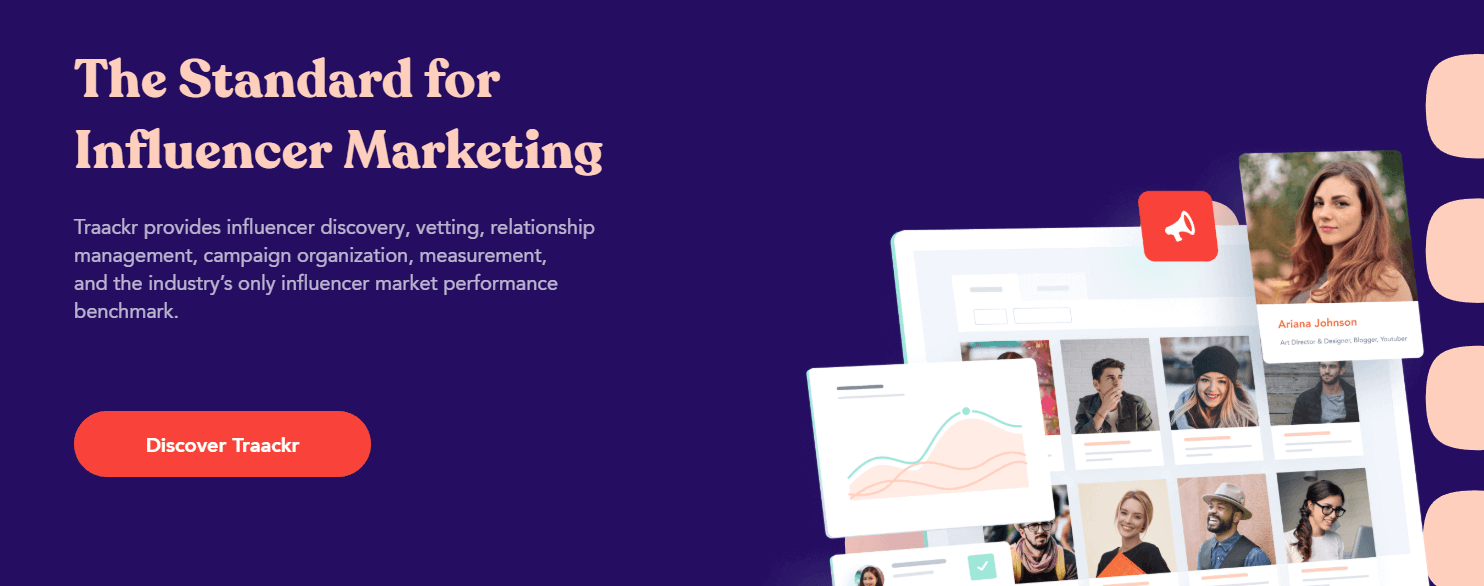The term ‘influencer’ has become a bit of a buzzword online. It seems nearly everyone wants to be an influencer on social media, but in practice, it takes more than posting a lot and amassing followers. Of course, you can have a high follower count, but if it doesn’t translate to conversions, you’re not actually going to influence anyone.
Running a blog in the modern climate also means having a presence on social media. If your chosen profiles are active and engaging, they can help catapult your blog to success by capturing traffic and helping you to win conversions.
In this article, we’re going to talk a bit more about influencers in today’s social media landscape. Then we’ll break down the basics of how to become one. Let’s get to it!
What it means to be an ‘influencer’
Being an influencer on social media means you have plenty of clout with sponsors and users. Just to give you an idea of the ‘weight’ these kinds of users command on social media, consider a study carried out by Mediakix that predicts businesses will spend over $1.6 billion on influencer marketing in 2019.
As such, the more followers you have and the more trust you can build with them, the better your ability to drive conversions should be. This is a key reason why businesses spend so much on influencers.
More importantly, this is why building a strong social media presence can help you grow your blog. However, you don’t have to take our word for it – let’s look at influencer marketing by the numbers.
Why being an influencer can pay off handsomely
Consider Instagram – approximately one billion people use the platform each month, and about half of them are active every single day. What’s more, up to 60% of active users admit they use the platform to discover new products and services.
Savvy marketers understand what those numbers mean, which is why 71% of US-based businesses use Instagram to drive conversions. One of the best ways to do this is through influencers, as a single post or shoutout can translate to hundreds or thousands of conversions.
Some of the best-paid influencers on social media include the likes of Selena Gomez and Cristiano Ronaldo. Both of them can command up to half a million dollars for a single post advertising products.


Of course, this example is an extreme. However, even ‘garden variety’ influencers can still make bank. For example, fashion influencers such as Huda Kattan and Zoella charge anywhere between $10–20,000 for promoting products.
When you combine their clout, the top 50 influencers on Instagram alone total 3.1 billion followers – an approximate and staggering 40% of the world population. However, if your blog can command just a tiny fraction of interest in social media – even 0.1 percent of social media users – it can be more than enough to grow it exponentially.
How to become an influencer through growing your presence and cultivating engagement (7 steps)
You may already have a social media presence on a personal level. However, your blog might still not be a part of any platforms. In order to influence viewers, you need to right this. Let’s get into it with step number one.
Step #1: Pick a niche and a channel
Everyone wants to be fit and beautiful, so it shouldn’t come as a surprise that health and fashion are the two biggest influencer niches in social media. However, this doesn’t mean there’s no room for other types of influencers. If you take a look at some of the most popular social media accounts currently, you’ll also notice plenty of brands.
The point is, no matter what your blog’s niche is, there’s probably an audience ready and waiting. However, you need to make sure you pick the right channel for it. For example, a web development tutorials blog could probably gain a nice community of followers on Facebook and Twitter simply by sharing your blog posts. However, this content may not translate well to Instagram or Pinterest.
To sum it up, your niche and your existing audience will determine what social media channel you want to focus your efforts on. You don’t need to limit yourself to a single one, particularly if you use social media management tools. However, trying to grow a following on too many platforms at once is not a smart move.
Step #2: Analyze what other influencers are doing in your niche
Once you know what social media platforms you want to focus on, you’ll need to take a look at what the most influential accounts in your niche are doing. Let’s use fashion as an example since it’s so popular.
Susie Lau is a trendy fashion blogger and influencer. She has over 460,000 followers on Instagram, and she uses the platform to drive traffic back to her blog – so she’s an even more relevant example.
If you take a close look at Susie’s Instagram account, you’ll notice a pattern – regular posts outweigh product placement. You can identify the promoted posts by both how prominent the products are, and the disclaimers:


The main takeaway here is in most cases, influential accounts don’t amass huge followings by shilling products. Instead, you have to either provide value or entertainment to your followers.
Naturally, you also want to take a look at what kind of content your competitors are posting. This will vary depending on the platform of course, but you should aim to emulate and improve on their content, if possible.
Step #3: Plan a content strategy
At this stage, you should have a rough idea of what the social media landscape looks like within your niche, this means:
- Which are the most popular accounts?
- What type of content do they post?
- What services or products do they push?
- How engaged is their audience? (i.e. how many likes and comments they get on average).
- How often they post.
Think of those points as your roadmap. Your goal now is to try and be at least as active as some of your competitors and try to outdo them in quality of content, while targeting similar keywords and hashtags.
All of these steps should sound familiar to those who have experience in building a blog. After all, the processes are very similar – you pick a niche, analyze the competition, and try to outdo them.
However, with social media you have an advantage – your blog already provides you with a source of content. You can share it on social media and complement those posts with more light fare to stay active and maximize engagement.
Step #4: Optimize your posts for mobile and publish at the right times
Up to 70% of all online traffic comes from mobile users, and with platforms such as Instagram this figure will be much higher. This means if you’re not optimizing your social media posts for smaller and portable screens, you’re missing out on the whole point of how to become an influencer.
Fortunately, most social media platforms are already geared toward mobile use, so adapting your content to this user base is straightforward. In most cases, you simply have to pick images that look good on mobile and catch the user’s attention. The latter here is essential because social media is pretty much an endless barrage of distractions. In a nutshell, your posts need to stand out.
The best thing you can do to maximize engagement is to publish new posts at the right time. Here are some numbers, compiled from different studies about optimal posting times for maximum engagement:
- Instagram: Wednesdays at 11:00AM and Fridays between 10–11:00AM.
- Facebook: Wednesdays at 11:00AM.
- Twitter: Wednesdays and Fridays at 9:00AM.
It makes sense for users to be more active on a Friday, given that for some it’s the unofficial start of the weekend. However, Wednesday is clearly most popular when it comes to social media engagement, which is surprising as logically evenings would be a better time to get people’s attention. However, the numbers show people spend more time browsing platforms early in the day (unless we’re talking about Tinder).
Finally, keep in mind that these numbers aren’t suggesting you can ignore your social media accounts during the rest of the week. What you should be doing is saving your best content for peak optimal times (if you’re using one of the stated platforms). This way, you give those posts the best possible fighting chance.
Step #5: Engage with your audience
We’ve talked a lot about engagement throughout this article. When it comes to social media, “engagement” translates to a lot of things, including:
- How many people comment on your posts.
- How many users share your content.
- The number of reactions you get on your posts.
- How many of those interactions translate to conversions.
One thing we see across social media are accounts with large numbers of followers that don’t translate well to conversions. At first glance, you might think an account with 50,000 followers is a fledgling influencer, but if they can’t engage their audience, the actual number is insignificant.
Growing a successful social media presence involves a lot of looking at numbers, but you also need to showcase your personality. The people who follow you, in most cases, want to know there’s a real person behind the account. In other words, an audience wants to support the person, rather than a human infomercial.
The easiest way to build trust and engagement with your audience is to interact with them honestly and often. Reply to comments and questions, share other interesting content you find around the web – anything to keep the conversation going. In time, your circle of influence should expand and you’ll find that people are paying real attention to what you say on social media.
Step #6: Collaborate with other social media users
Making your mark online isn’t something you have to do alone. It can be easy to view all the other social media users and influencers out there as competition – and in some sense, they are. However, there’s also plenty of benefit to be had from setting up the right kinds of collaborations.
After all, working together with other prominent social media users can be a mutually-beneficial strategy. You can create content that’s bigger and better than what either of you could accomplish alone. Plus, you’ll be able to expose your brand to entirely new audiences (the other influencer’s followers).
Early on, your best bet is to seek out ‘mini-influencers,’ who are usually defined as social media users with around 5,000 to 10,000 followers. These people are big enough to have an audience worth your time, yet small enough that they’re probably open to collaboration and won’t represent significant competition. They may also inhabit a very specific niche that you haven’t yet targeted.
You can locate mini-influencers to work with in a number of ways. This includes checking out your own follower lists, conducting audience research, and using a tool like Traackr to simplify the process:


No matter what approach you use, be sure to reach out to any social media users personally and maintain a friendly but professional tone in your communications. Once you’ve done a few successful collaborations and become a mini-influencer yourself, set your sights on larger brands and influencers to collaborate with to continue growing your audience.
Step #7: Track your results over time
So far, we’ve looked at how to get started on your journey toward becoming an influencer. Once you’ve started making an impact, however, you’ll also need to ensure that you keep up that momentum to become a true influencer. This means keeping a close eye on your progress and results, so you know what’s working and what isn’t.
As you continue to create content and build a following, you’ll want to track key metrics that tell you how your audience is responding. That includes views, engagement, Click-Through Rates (CTRs), follower counts, and more. You’ll want to see these numbers begin to grow over time – especially those that relate to the core goals of your influencer campaign.
In addition, it’s smart to keep a close eye on what other influencers are doing, particularly those within your own niche. Studying your competition can tell you what type of content works with your audience, and which trends are currently popular. Plus, you can keep an eye out for gaps in your competitors’ strategies – gaps you can fill with your own content.
Conclusion
Popularity on social media is seemingly important for many businesses and websites. It’s rare to find a popular blog that doesn’t have a strong social media presence. However, if you target the right platforms and know how to engage with your followers, you can win plenty of conversions you might not otherwise get through driving traffic to both your site and those of your clients.
If you want to become a social media influencer, it all boils down to seven key steps:
- Pick a niche and a channel.
- Analyze what other influencers are doing in your niche.
- Plan a content strategy.
- Optimize your posts for mobile and publish at the right times.
- Engage with your audience.
- Collaborate with other social media users.
- Track your results over time so you can refine your efforts based on those results.
The road to becoming and influencer is a long one, but with a methodical approach, you can find success.
Do you have any questions about how to get more engagement on social media? Let’s talk about them in the comments section below!
The post How to Become an Influencer: Your Guide to Success on Social Media appeared first on Revive Social.